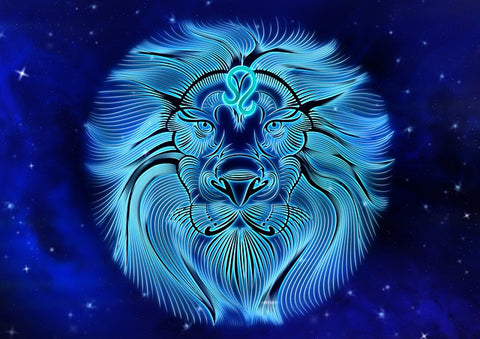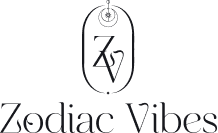The northern sky contains the constellation, Leo. It belongs to the zodiac and is among the most prominent constellations in the heavens. In Greek mythology, the lion is represented by Leo, typically related to the Nemean lion. Like all of the other zodiac constellations, it was compiled in a list by the Greek astronomer Ptolemy in the second century.
The brilliant constellations Denebola and Regulus, the neighboring star Wolf 359, and a variety of well-known night skies phenomena, such as galaxies Messier 65, Messier 95, Messier 66, Messier 105, Messier 96, and NGC 3628, may all be found in the Leo constellation.
Leo Constellation Location, Map, and Facts
At 947 square degrees, Leo is the 12th-largest constellation in size. It may be observed at latitudes around +90° and -65° in the northern hemisphere's second quadrant. The nearby constellations are Coma Berenices, Cancer, Hydra, Crater, Ursa Major, Leo Minor, Sextans, Lynx, and Virgo. The word Leo of the constellation is transcribed as /lio/. The constellation is referred to as the Lion in English.
Leo's possessive version, Leonis (pronounced /lions/), is utilized in star names. The International Astronomical Union chose the three-letter acronym Leo in 1922. Messier 66, Messier 96, Messier 95, Messier 65, and Messier 105 are among the five Messier bodies in Leo. 11 of its stars have identified planets. With Aries, Aquarius, Gemini, Taurus, Cancer, Libra, Scorpius, Virgo, Capricornus, Sagittarius, and Pisces, Leo is a member of the Zodiac group of constellations. Regulus, Alpha Leonis, the brightest light in Leo, has an importance value of 1.35. Another of the fifteen equatorial constellations is Leo. There are 13 identified stars there. The International Astronomical Union officially authorized the designations Adhafera, Chertan, Alterf, Dingolay, Denebola, Formosa, Algieba, Moriah, Regulus, Rasalas, Subra, Sagarmatha, and Zosma for stars.
The constellation is connected to two meteor showers. The Leonids typically reach their annual maximum on November 17–18 and make a radiant close to the brilliant star Gamma Leonis. A brief shower called the January Leonids occurs around January 1 and 7.

Tale
Among the older celestial constellations is Leo. According to archaeological finds, Leo-like constellations were present in Mesopotamia as early as 4000 BC. The constellation was termed Ser or Shir by the Persians, Aryo by the Syrians, and UR.GU.LA by the Babylonians and Artan by the Turks. The Monarch Star, or "the star that rises at Lion's bosom," was how the Babylonians referred to the star Regulus. Most primitive civilizations were familiar with the constellation and its brightest star.
The Nemean lion, which Heracles slew at the beginning of his twelve labors, symbolizes Leo in Greek culture. Lion is positioned among the constellations since it was the ruler of beasts, according to Hyginus and Eratosthenes. The city of Nemea, southwest of Corinth, is where the lion had its home, a cavern. It attacked the local populace and was unstoppable due to its impervious skin.
Heracles could not kill the lion using arrows, so he imprisoned it in a cavern, wrestled with it, and ultimately killed it. He hacked off the lion's fur with its claws and donned it as a cape, along with the animal's head. Heracles' cloak simultaneously concealed him and increased his menacing appearance. The lion's head can be seen in the sky as the six starlights that make up the Sickle of Leo, while the animal's heart can be seen as Regulus, the constellation's biggest star. Denebola, another brilliant star, marks the lion's tail's end.
Although its title means "the forehead," Algieba sits on the lion's neck, and Zosma indicates the lion's rump.
Some of Leo's biggest stars
Alpha Leonis: Regulus
The biggest star in Leo and the 22nd brightest star in the sky is Regulus, Alpha Leonis. It is roughly 77 lightyears away and has an importance value of 1.35. A four-star cluster made up of two groups of stars is known as Regulus. A spectroscopic binary system called Regulus A comprises a blue-white main sequence of the spectrum category B7 V and an unresolved partner star that is thought to be a white dwarf. Every 40 days or thereabouts, the two stars finish an orbit around their shared mass.
The correct motions of Regulus B and Regulus C are similar. They are faint main sequence stars having optical magnitudes of 8.14 and 13.5 that are situated 177 arc seconds apart from Regulus A. The partner of Regulus B, a K2V star, is thought to be a red dwarf with the spectral class M4V. The distance between the two stars is approximately 100 astronomical units, and their flight time is 2,000 years.
Beta Leonis Denebola
The 61st brightest light in the sky, Denebola is the second-brightest star in the constellation of Leo. It is a primary sequence star with the stellar category A3 V, located 35.9 light years away from Earth, and it has an importance value of 2.103. Without glasses, you can view the star.
Denebola is 12 times brighter, has a diameter of 173% that of the Sun, and has 75% more mass. It is categorized as a Delta Scuti variable, indicating that over a few hours, its intensity changes significantly. Around ten times daily, Denebola displays changes in luminosity of 0.025 magnitudes.
Gamma Leonis: Algieba
A double star in Leo is called Gamma Leonis. The star is also occasionally referred to by its Latin title, Juba. However, its royal title, Al Gieba or Algieba, originates from the Arabic Al-Jabhah, meaning "the forehead." A massive star with the spectral type K1-IIIbCN0.5 plus a fainter partner star with the spectral type G7IIICN-I makes up Algieba.
The enormous giant has an importance value of 2.28 and is 180 times as bright as the Sun. The G7 category star is 50 times brighter than the Sun, has a visible magnitude of 3.51, and is ten times as massive as the Sun.
Take Away
Leo's constellation has several facts that everyone should know. The things we have listed above are just a small overview of the Leo constellation. We hope that you have learned from this article.


